Cover image
1
�
Cover image
2
�
Title page
Electric Motors and Drives
Fundamentals, Types and Applications
Fifth Edition
Austin Hughes
Bill Drury
3
�
Table of Contents
Table of Contents
Cover image
Title page
Copyright
Preface
Chapter 1: Electric motors—The basics
Abstract
1.1 Introduction
1.2 Producing rotation
1.3 Magnetic circuits
1.4 Torque production
1.5 Torque and motor volume
1.6 Energy conversion—Motional e.m.f
1.7 Equivalent circuit
1.8 Constant voltage operation
1.9 General properties of electric motors
1.10 Review questions
Chapter 2: Power electronic converters for motor drives
Abstract
2.1 Introduction
2.2 Voltage control—D.C. output from d.c. supply
4
�
2.3 D.C. from a.c.—Controlled rectification
2.4 A.C. from d.c.—Inversion
2.5 A.C. from a.c.
2.6 Inverter switching devices
2.7 Converter waveforms, acoustic noise, and cooling
2.8 Review questions
Chapter 3: D.C. motors
Abstract
3.1 Introduction
3.2 Torque production
3.3 Motional e.m.f.
3.4 D.C. motor—steady-state characteristics
3.5 Transient behaviour
3.6 Four quadrant operation and regenerative braking
3.7 Shunt and series motors
3.8 Self-excited d.c. machine
3.9 Toy motors
3.10 Review questions
Chapter 4: D.C. motor drives
Abstract
4.1 Introduction
Table of Contents
5
�
4.2 Thyristor d.c. drives—general
4.3 Control arrangements for d.c. drives
4.4 Chopper-fed d.c. motor drives
4.5 D.C. servo drives
4.6 Digitally-controlled drives
4.7 Review questions
Chapter 5: Induction motors—Rotating field, slip and torque
Abstract
5.1 Introduction
5.2 The rotating magnetic field
5.3 Torque production
5.4 Influence of rotor current on flux
5.5 Stator current-speed characteristics
5.6 Review questions
Chapter 6: Induction motor—Operation from 50/60 Hz supply
Abstract
6.1 Introduction
6.2 Methods of starting cage motors
6.3 Run-up and stable operating regions
6.4 Torque-speed curves—Influence of rotor parameters
6.5 Influence of supply voltage on torque-speed curve
Table of Contents
6
�
6.6 Generating
6.7 Braking
6.8 Speed control (without varying the stator supply frequency)
6.9 Power-factor control and energy optimisation
6.10 Single-phase induction motors
6.11 Power range
6.12 Review questions
Chapter 7: Variable frequency operation of induction motors
Abstract
7.1 Introduction
7.2 Variable frequency operation
7.3 Practical aspects of inverter-fed drives
7.4 Effect of inverter on the induction motor
7.5 Utility supply effects
7.6 Inverter and motor protection
7.7 Review questions
Chapter 8: Field oriented control of induction motors
Abstract
8.1 Introduction
8.2 Essential preliminaries
8.3 Circuit modelling of the induction motor
Table of Contents
7
�
Table of Contents
8.4 Steady-state torque under current-fed conditions
8.5 Dynamic torque control
8.6 Implementation of field-oriented control
8.7 Direct torque control
8.8 Review questions
Chapter 9: Synchronous, permanent magnet and reluctance motors and drives
Abstract
9.1 Introduction
9.2 Synchronous motor types
9.3 Torque production
9.4 Utility-fed synchronous motors
9.5 Variable frequency operation of synchronous motors
9.6 Synchronous motor drives
9.7 Performance of permanent magnet motors
9.8 Emerging developments in permanent magnet motors
9.9 Review questions
Chapter 10: Stepping and switched reluctance motors
Abstract
10.1 Introduction
10.2 Stepping motors
10.3 Principle of motor operation
8
�
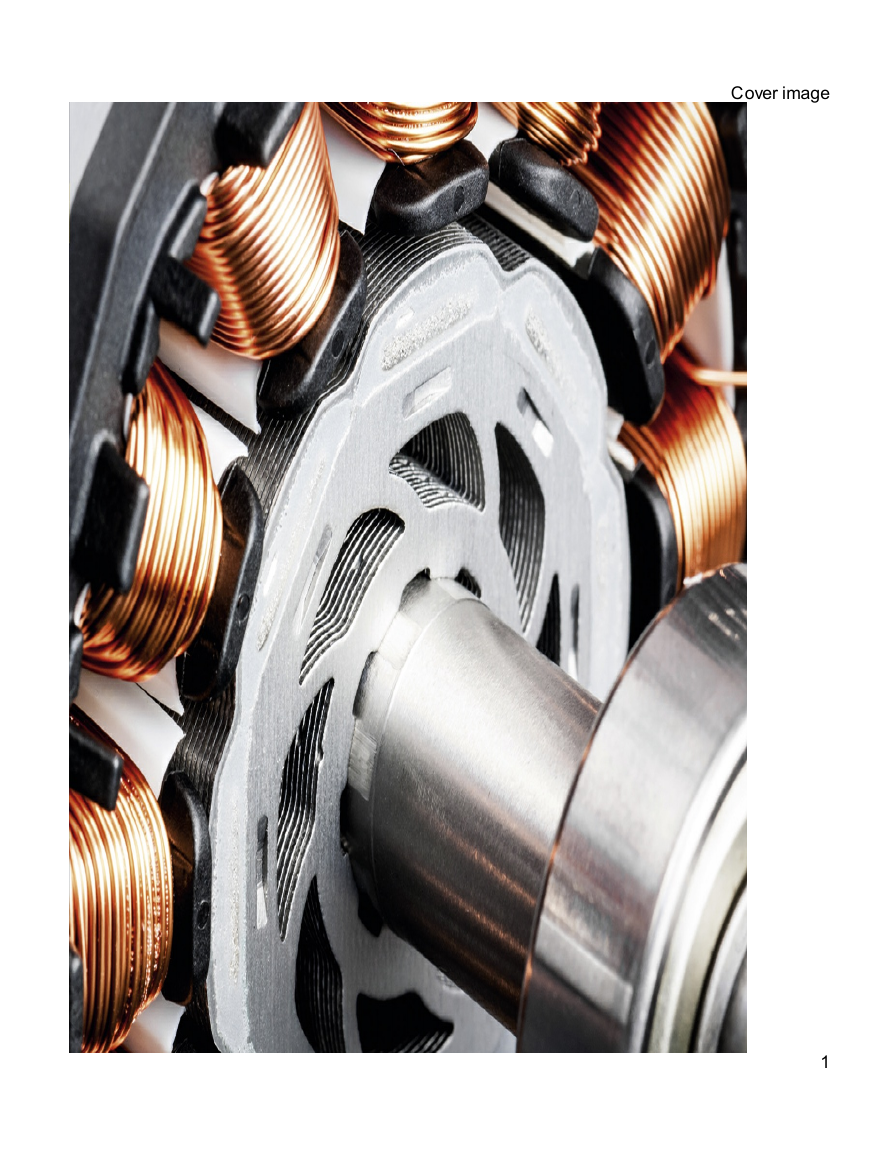

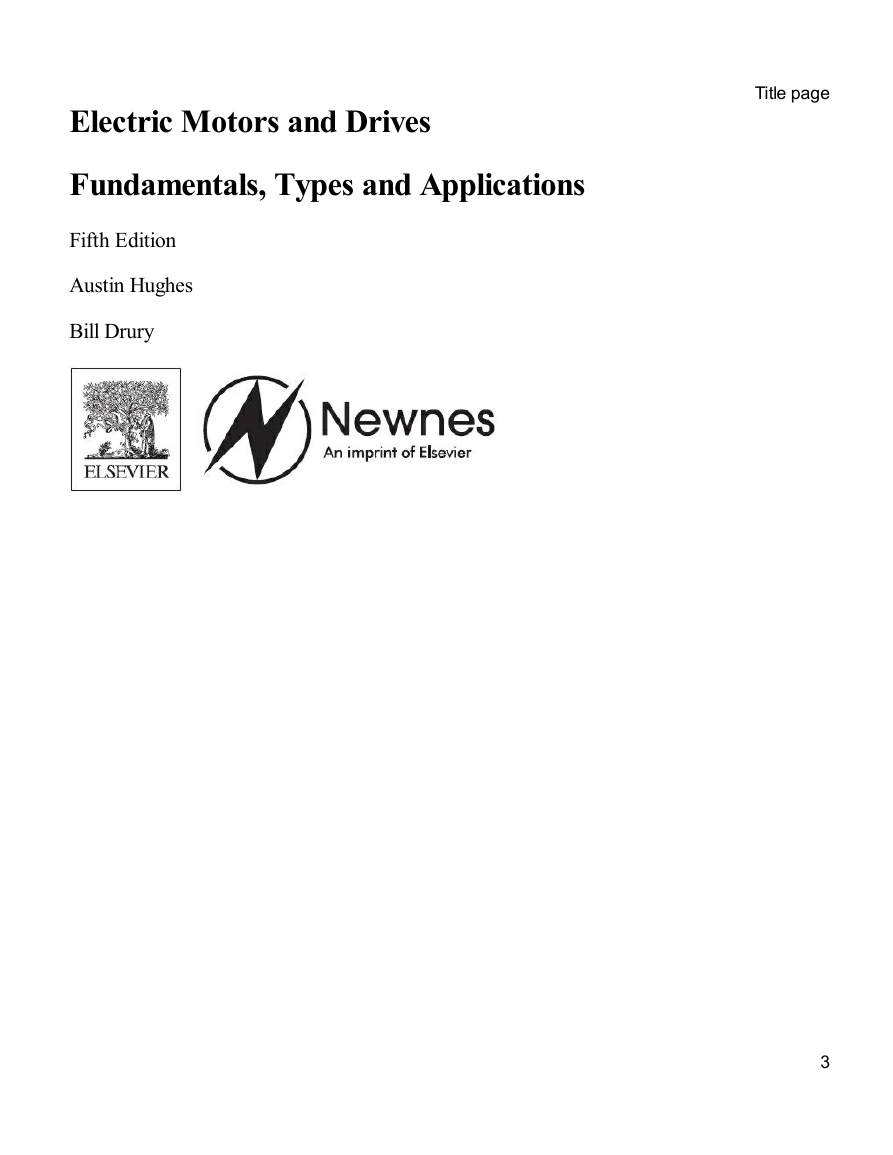
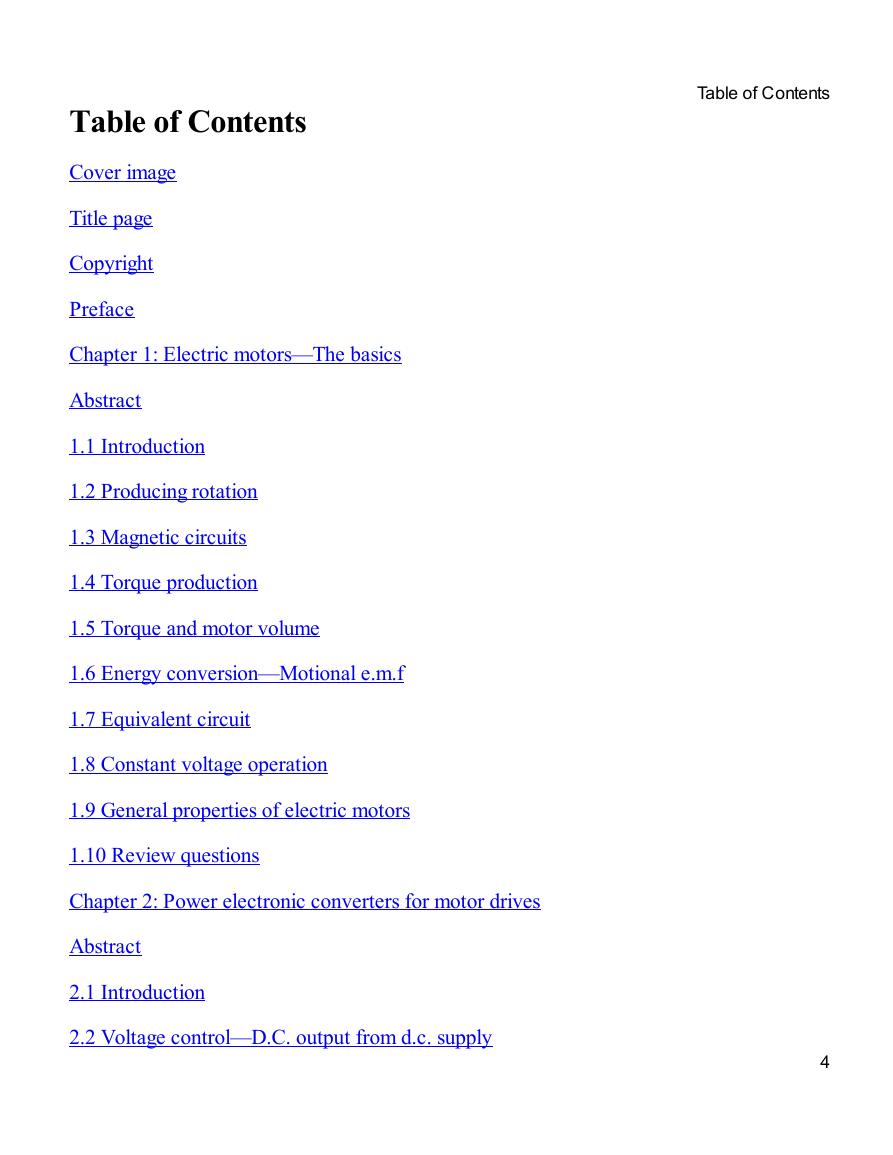
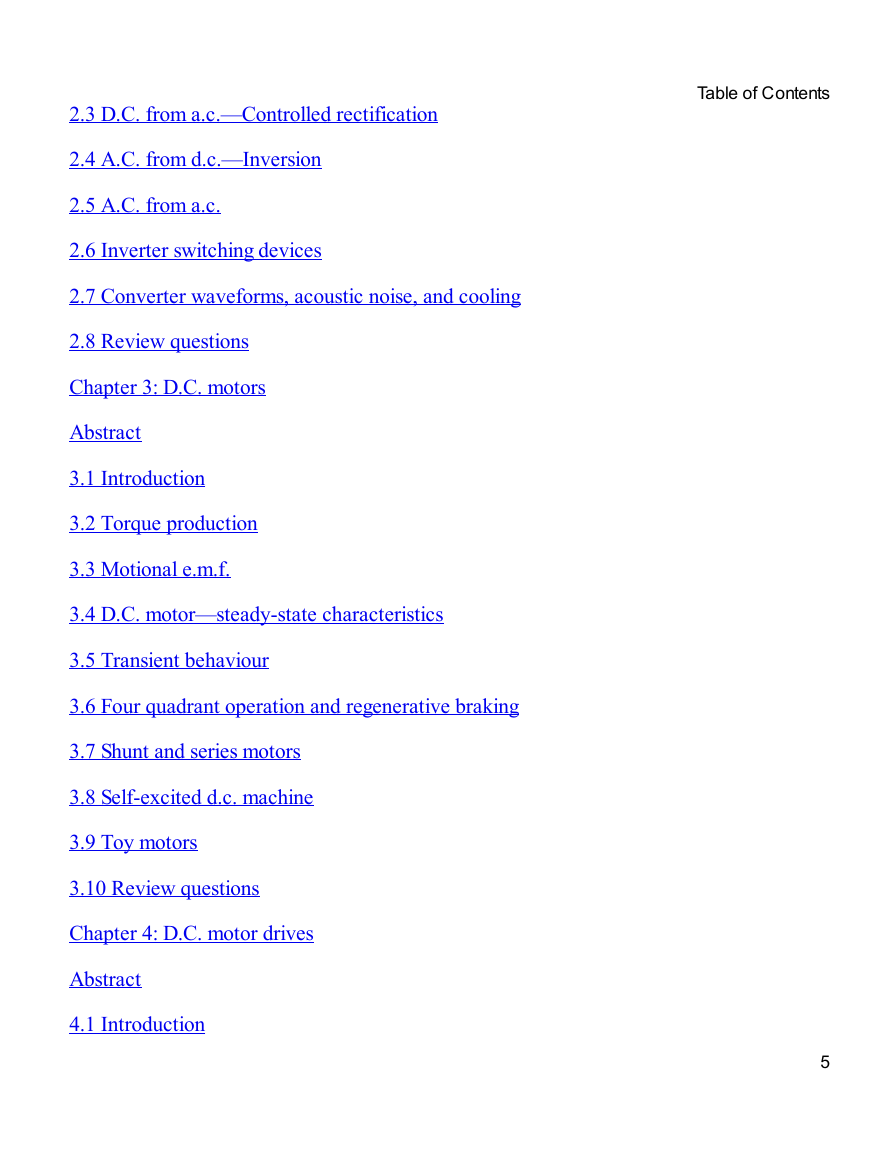
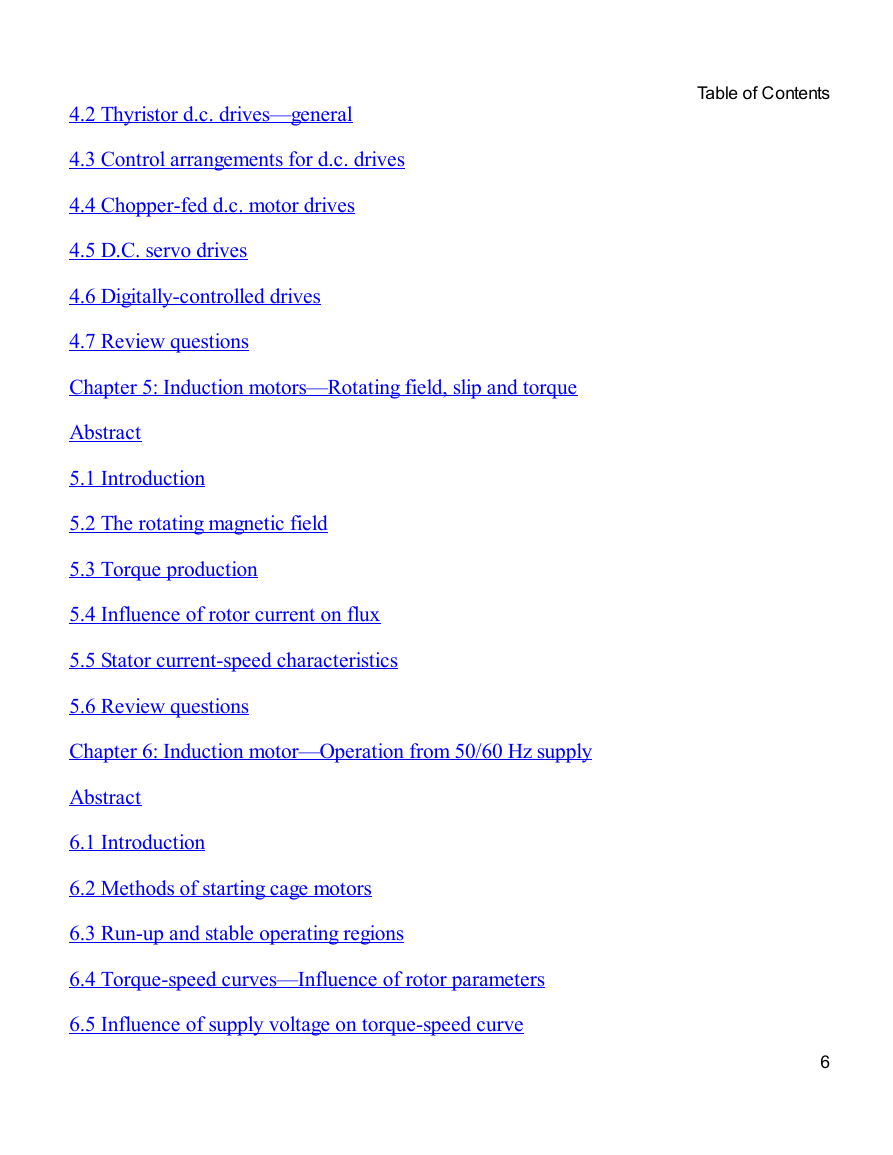
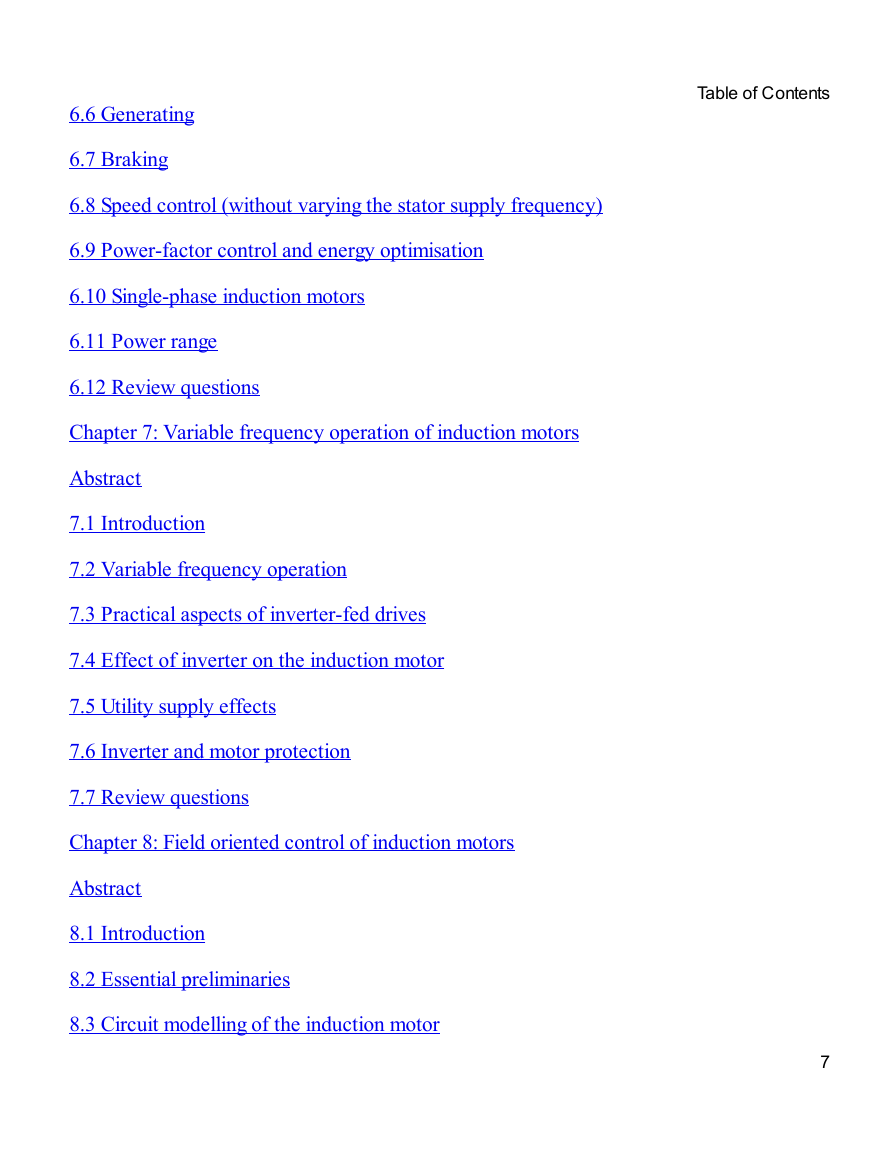
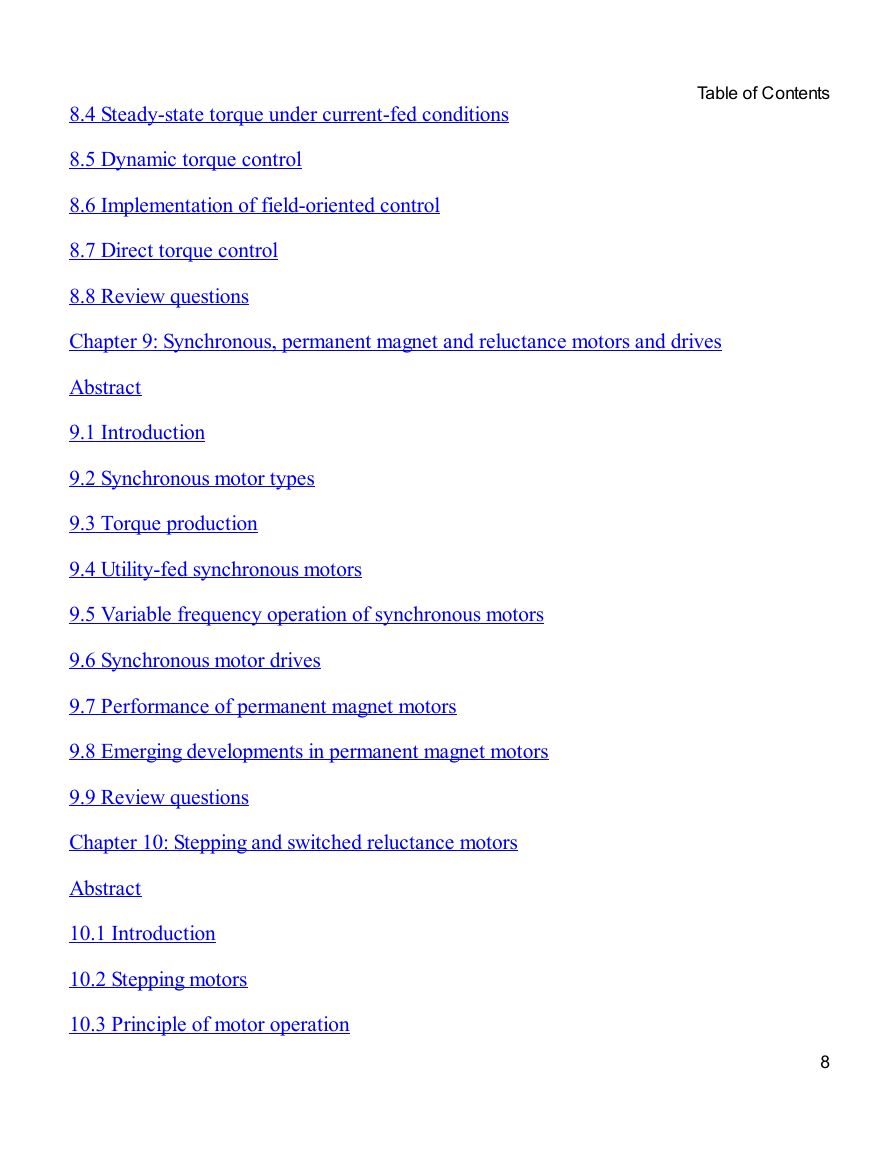








 2023年江西萍乡中考道德与法治真题及答案.doc
2023年江西萍乡中考道德与法治真题及答案.doc 2012年重庆南川中考生物真题及答案.doc
2012年重庆南川中考生物真题及答案.doc 2013年江西师范大学地理学综合及文艺理论基础考研真题.doc
2013年江西师范大学地理学综合及文艺理论基础考研真题.doc 2020年四川甘孜小升初语文真题及答案I卷.doc
2020年四川甘孜小升初语文真题及答案I卷.doc 2020年注册岩土工程师专业基础考试真题及答案.doc
2020年注册岩土工程师专业基础考试真题及答案.doc 2023-2024学年福建省厦门市九年级上学期数学月考试题及答案.doc
2023-2024学年福建省厦门市九年级上学期数学月考试题及答案.doc 2021-2022学年辽宁省沈阳市大东区九年级上学期语文期末试题及答案.doc
2021-2022学年辽宁省沈阳市大东区九年级上学期语文期末试题及答案.doc 2022-2023学年北京东城区初三第一学期物理期末试卷及答案.doc
2022-2023学年北京东城区初三第一学期物理期末试卷及答案.doc 2018上半年江西教师资格初中地理学科知识与教学能力真题及答案.doc
2018上半年江西教师资格初中地理学科知识与教学能力真题及答案.doc 2012年河北国家公务员申论考试真题及答案-省级.doc
2012年河北国家公务员申论考试真题及答案-省级.doc 2020-2021学年江苏省扬州市江都区邵樊片九年级上学期数学第一次质量检测试题及答案.doc
2020-2021学年江苏省扬州市江都区邵樊片九年级上学期数学第一次质量检测试题及答案.doc 2022下半年黑龙江教师资格证中学综合素质真题及答案.doc
2022下半年黑龙江教师资格证中学综合素质真题及答案.doc